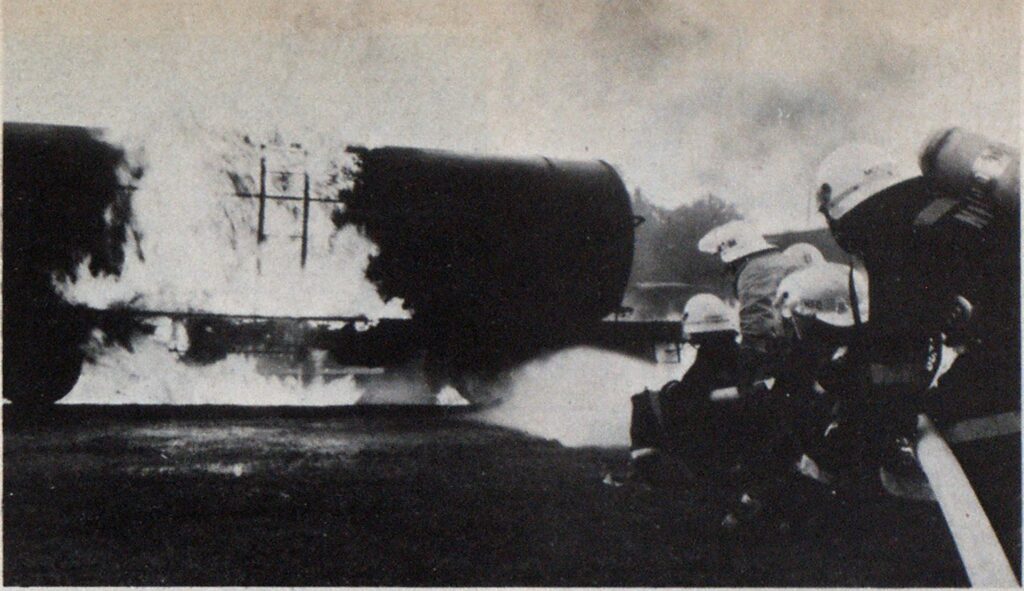
Railroad Tanker Improves Center’s HazMat Training
features

Training for rail accidents involving hazardous materials is more realistic at the Jefferson Parish Fire Training Center in Bridge City, La., now that their own tank car is in place. The 40-year-old general purpose tank car was scheduled for scrapping until Union Tank Car Company learned that the training center could use it to demonstrate problems with all kinds of hazardous cargo.
“This tank car is invaluable to us in teaching fire fighters all we know about combating railway incidents involving hazardous materials,” explained George Martinsen, coordinator of the training center. “We’ve been actively seeking a tank car, and we’re extremely pleased that Union Tank Car acted affirmatively on our request.”
Getting the tank car to the 8-acre training center near New Orleans was a considerable undertaking. When Union Tank Car Company, a Trans Union Corporation affiliate, agreed in May of 1980 to donate the car, it was in Kansas. Fire center officials then prevailed on Missouri-Pacific and Santa Fe railroad personnel to deliver the car to the Bridge City area. Avondale Shipyards then trucked the tank car to the training site and provided cranes to position it on waiting rails.
Used in seminar
The usefulness of the tank car was demonstrated during a two-day seminar last October, when it was the focal point of a 16-hour training exercise. Instructors, led by the center’s assistant coordinator, Terry Hayes, and the Jefferson Parish Fire Department’s hazardous materials officer, Captain Dan Civello, put more than 100 fire fighters through their paces everything from containing anhydrous ammonia, chlorine and bromine leaks (simulated with smoke bombs) to extinguishing LPG and hydrocarbon fires.
Hayes noted that even though much progress has been made in the safe transportation of hazardous materials, “there continues to be a great need for more education and more training in ways to control the potential dangers that exist when moving these materials by truck, rail, car, sea and pipeline.”
Eliminating the unknown is the most important task a fire fighter faces when coping with hazardous materials, according to Hayes. He gives prominent mention to two items in all his lectures: binoculars and track shoes. The binoculars are used at long range to size up the situation; the track shoes are for moving quickly when it’s time to “get the hell out of there.” Although Hayes manages to inject some humor with this approach, he is deadly serious while teaching when to go in and when to get out of hazardous materials incidents.
Five-car train planned
Martinsen has been the driving force behind the training center since its beginning in the mid 1970s. At present, Martinsen and his assistants are concentrating on the center’s “railroad.”
“Union Tank Car gave us momentum by donating the first car for our railroad,” Martinsen said, “and now we are pursuing our goal to obtain an LPG tank car, a caustic or acid car, a box car and a caboose to complete the five-tar train we need to devise a total hazardous materials program for fire fighters.

